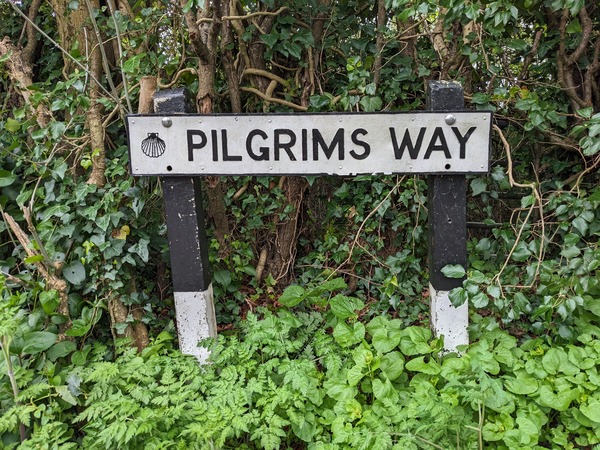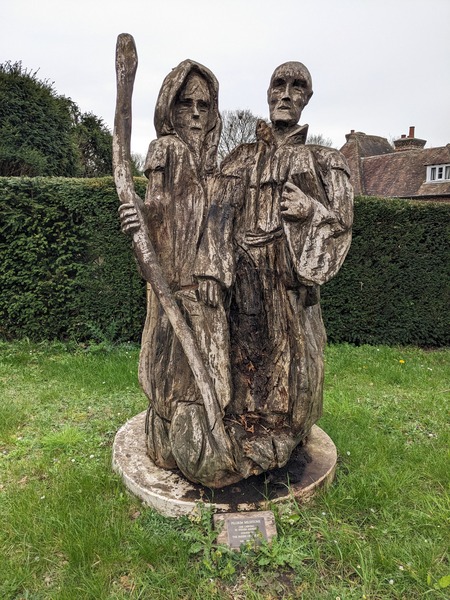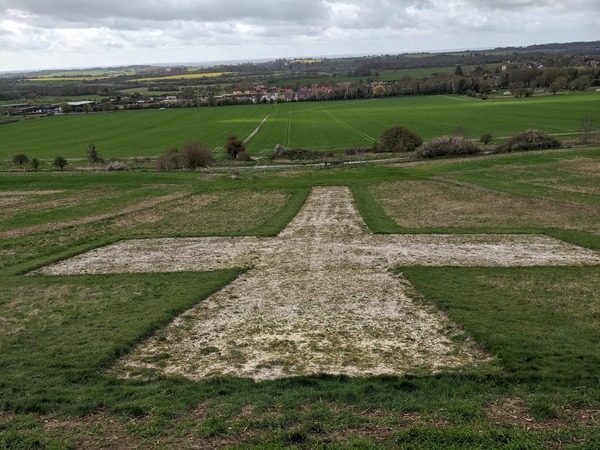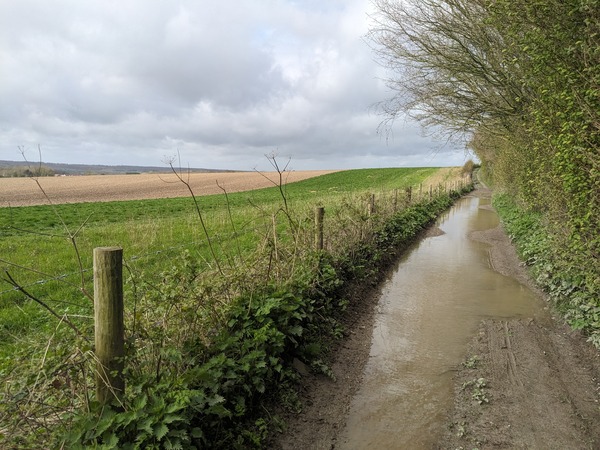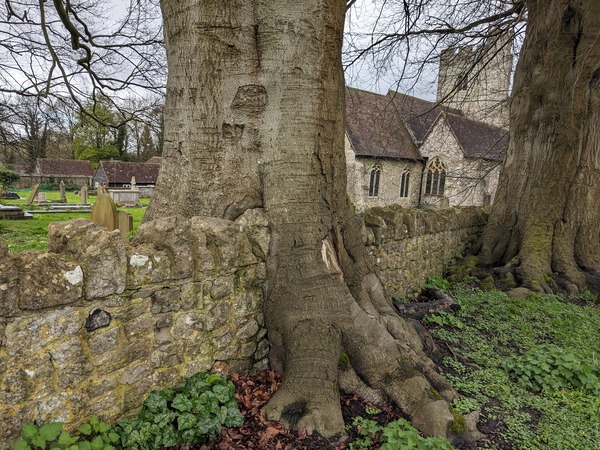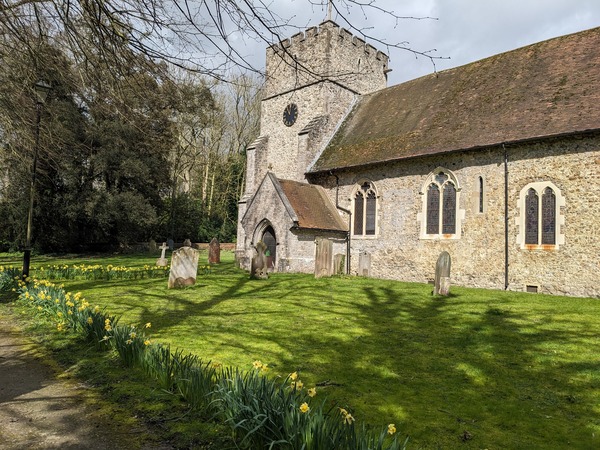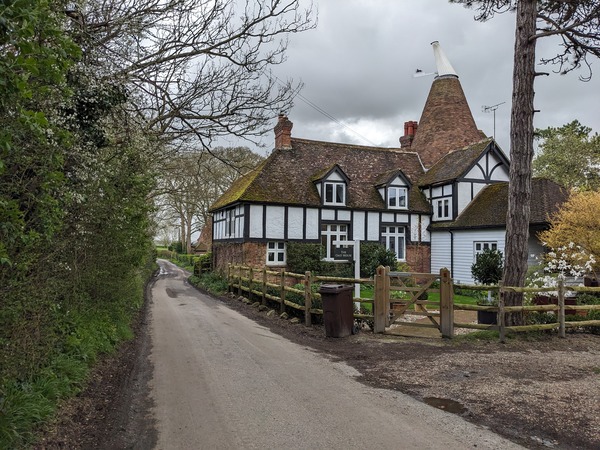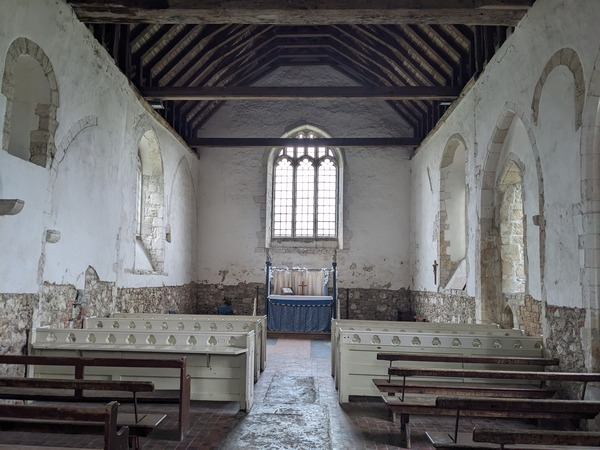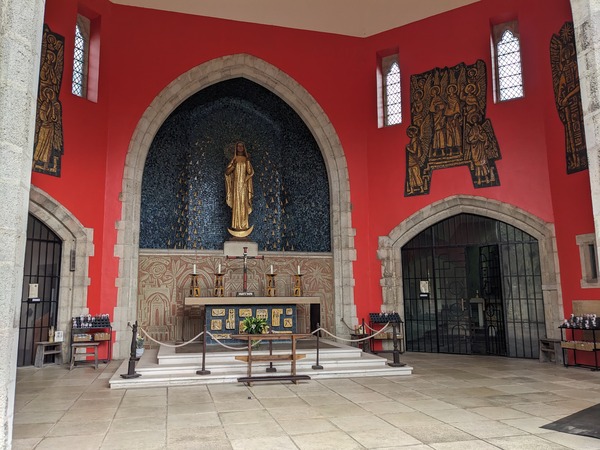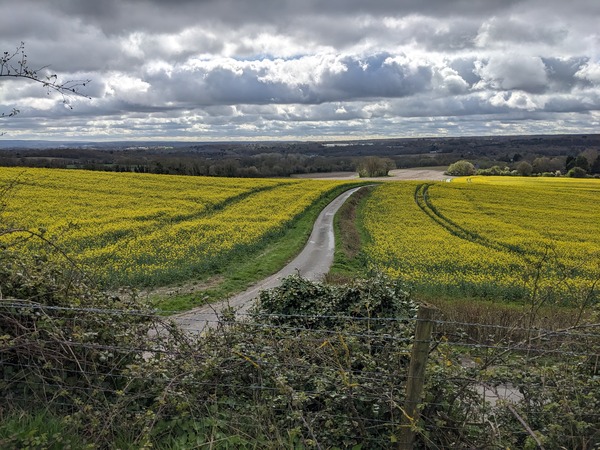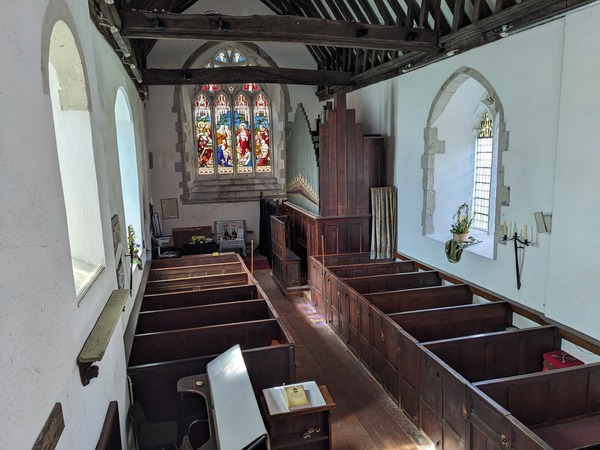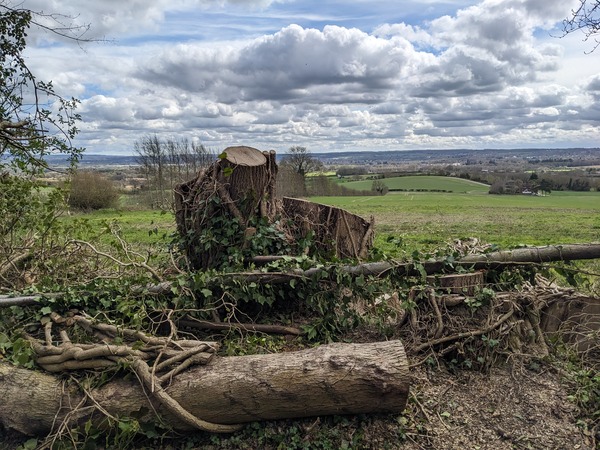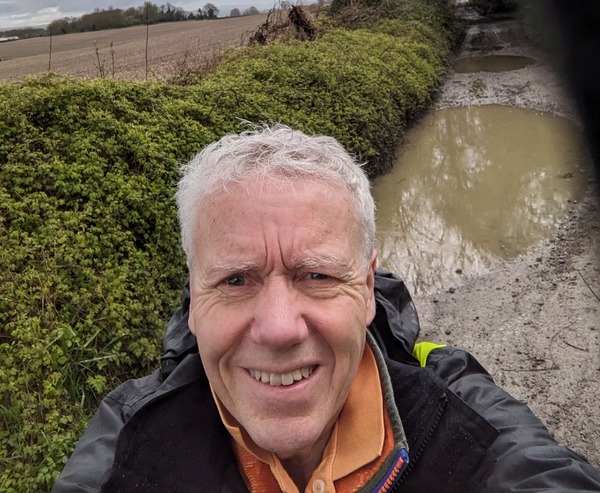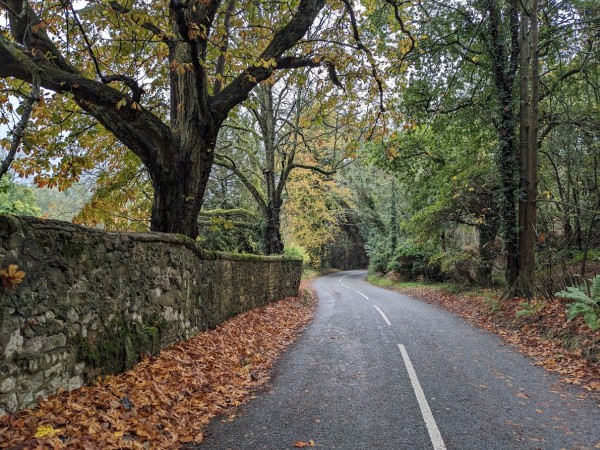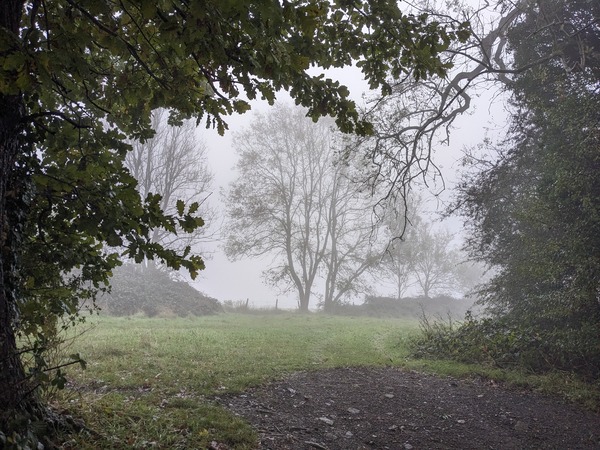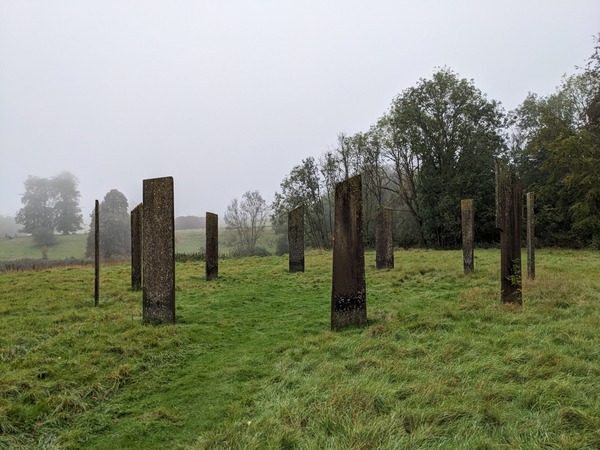
I stayed overnight at Chilham and woke early to leave at about 8 am. I tried the church doors before going and found them locked, but a man appeared and said, ‘Wait there a few minutes. I’ll open up.’ He said he did this duty on his way to pick up the papers. He told me they are getting the clock repaired by the Cumbria Clock Company, which did Big Ben, and the church has to raise £48,000. I got my passport stamped.

The walk was partly on roads and partly over rolling farmland. One feature at the top of what I think was called ‘Cardiac Hill’ was a seat designed to portray the sound waves of people in the nearby village. There was also an audio button for some poetry and an explanation of the artwork. The seat had a good view but I had to press my ear to hear the audio as the wind was noisy. The seat was made from apple crates. Soon after, I went through a huge orchard area with thousands of apple crates.
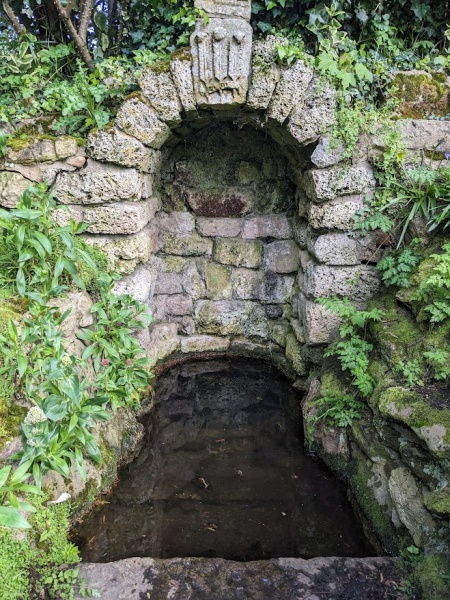
I arrived at Harbledown and tried the water from St Thomas Becket’s Well. Some of the Pilgrims who went to Canterbury in medieval times went to be healed, and perhaps the well had healing powers. I arrived at Harbledown Church just as their Sunday morning service was nearing the end. I went in to enjoy the smell of incense and the last hymn. I also got my pilgrim’s passport stamped there. They invited me to the church hall for coffee and cake, and were very friendly and sent their greetings to the churches in Abingdon.

Soon after, I got a view towards the towers of Canterbury Cathedral. I stopped off at St Dunstan’s Church on the way and admired the Thomas Moore window in the Roper Chapel. The head of Sir Thomas Moore, having been spiked over London bridge, was buried in the Roper Chapel.
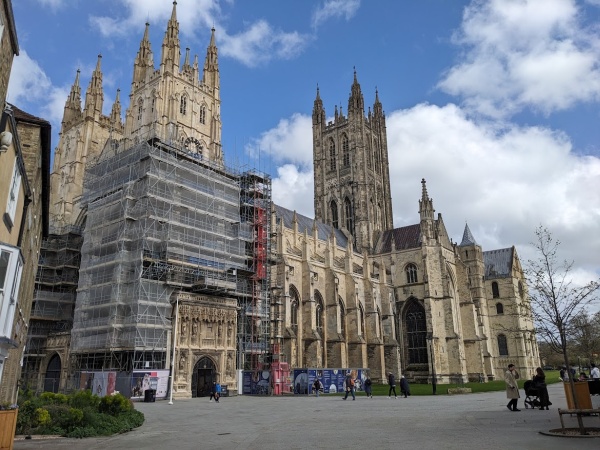
From there, the last part of the pilgrim way was through busy pedestrian streets to the cathedral where I got what I thought would be the last stamp. I was allowed in free as a result of the passport stamps.
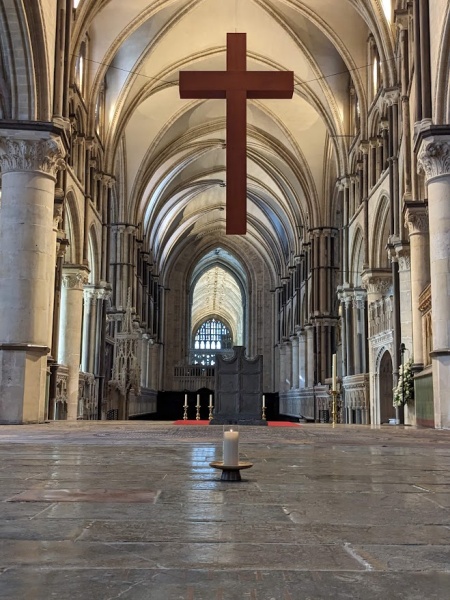
I went in search of St Thomas Becket’s shrine. But just like St Swithun’s shrine at Winchester, it had been removed under the orders of King Henry VIII. Instead there was a single candle.
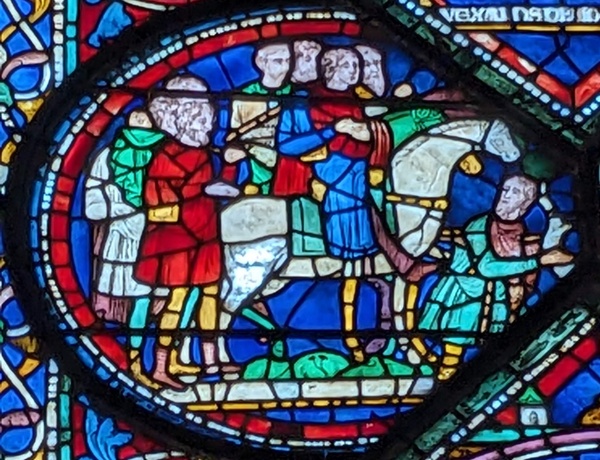
There were lots of stain glass windows showing people in beds being cured. Among them was a picture of pilgrims going to Canterbury. The man in front has crutches. I bought a little Becket badge as a souvenir like pilgrims used to do. Back then they would have been made in lead but not anymore.

I also visited St Martin’s Church about half a mile away. It is the oldest continually used church in the English speaking world and was founded about 580 AD. I only just got there in time as they closed at 3 pm and I got there with minutes to spare. The volunteer manning the church said it was more interesting than the cathedral. He showed me the roman walls and square door from around 400 AD, from a Roman building, that form the oldest part of the church. He also stamped by passbook with a final stamp, bigger than the Cathedral stamp.
I came home by train and bus in about 4 hours. The equivalent distance took me 16 days on foot.
